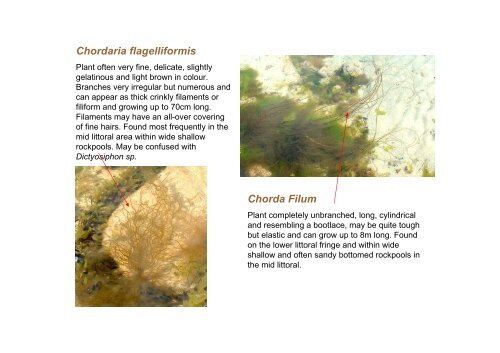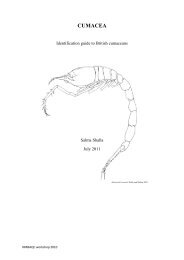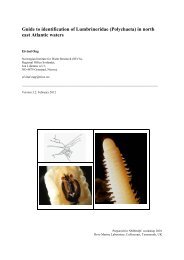s A Field Guide to the British Seaweeds - NMBAQC
s A Field Guide to the British Seaweeds - NMBAQC
s A Field Guide to the British Seaweeds - NMBAQC
You also want an ePaper? Increase the reach of your titles
YUMPU automatically turns print PDFs into web optimized ePapers that Google loves.
Chordaria flagelliformis<br />
Plant often very fine, delicate, slightly<br />
gelatinous and light brown in colour.<br />
Branches very irregular but numerous and<br />
can appear as thick crinkly filaments or<br />
filiform and growing up <strong>to</strong> 70cm long.<br />
Filaments may have an all-over covering<br />
of fine hairs. Found most frequently in <strong>the</strong><br />
mid lit<strong>to</strong>ral area within wide shallow<br />
rockpools. May be confused with<br />
Dictyosiphon sp.<br />
Chorda Filum<br />
Plant completely unbranched, long, cylindrical<br />
and resembling a bootlace, may be quite <strong>to</strong>ugh<br />
but elastic and can grow up <strong>to</strong> 8m long. Found<br />
on <strong>the</strong> lower lit<strong>to</strong>ral fringe and within wide<br />
shallow and often sandy bot<strong>to</strong>med rockpools in<br />
<strong>the</strong> mid lit<strong>to</strong>ral.




